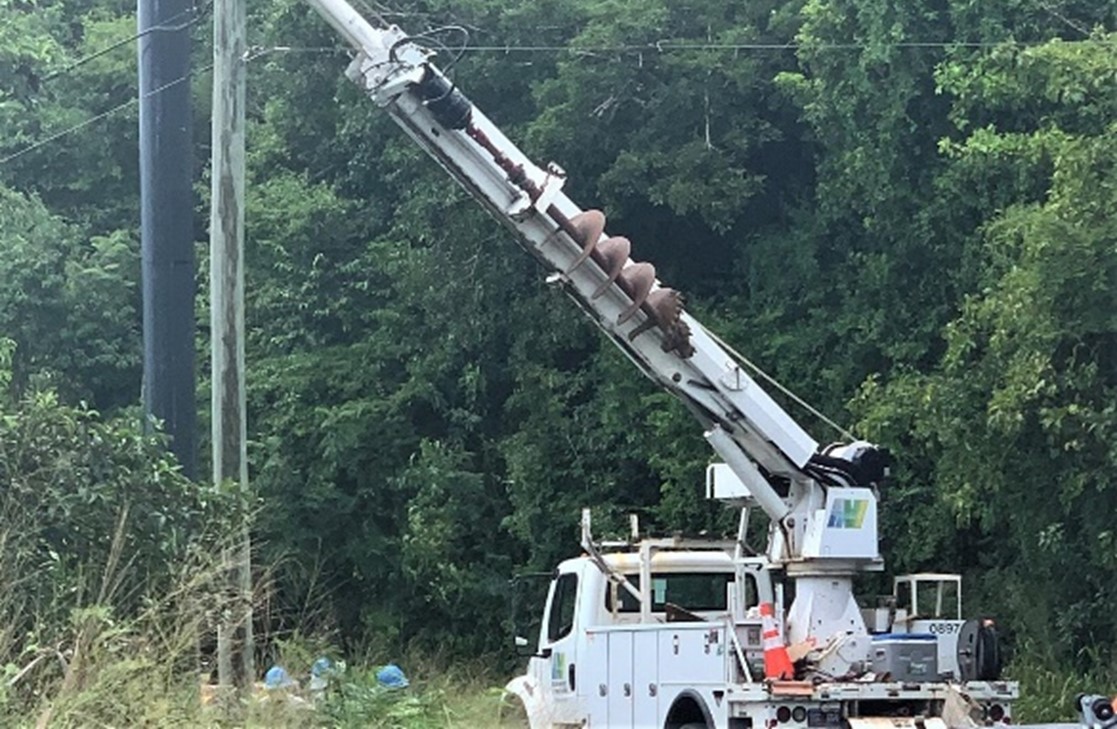
The installation of composite poles is ongoing across the territory, and the reason behind the recent scheduled outages on St. Croix, according to an update Wednesday from the V.I. Water and Power Authority.
The implementation of composite poles represents a significant advancement in the resilience and longevity of the territory’s transmission and distribution infrastructure, according to WAPA.
“The recent scheduled outages on St. Croix are a necessary step to ensure the seamless integration of the new composite poles into the existing infrastructure. These outages allow teams to safely and efficiently transfer wires and complete other essential tasks,” the release stated. “While undergrounding electrical infrastructure can offer protection against environmental factors, it is often cost-prohibitive and challenging in certain terrains. Composite poles provide an equally resilient alternative, ensuring our infrastructure can withstand natural disasters and continue to serve our community effectively.”
Composite poles are engineered to withstand harsh conditions, reducing outage frequency and severity compared to traditional wooden poles, the utility said. This improvement is particularly crucial in the territory, where natural disasters can cause extensive damage to the electrical infrastructure, according to the press release.
To date, 8,494 composite poles have been installed territory-wide by contractors, Haugland VI on St. Thomas, Water Island, and St. Croix, and BBC assigned to St. John, ensuring the successful completion of the composite pole installation project, the press release stated.
As previously released, the Water Island composite pole project was completed last year on schedule. “The authority is in the process of securing grant funding from FEMA to replace 2,200 additional poles territory-wide, recently approved by the WAPA Governing Board. Phase II has targeted end dates in 2026 to incorporate additional composite poles in strategic areas rather than opting for underground installations,” the release stated.
The installation of composite poles brings numerous benefits, including enhanced resilience of the infrastructure, reduced vulnerability to natural disasters, and more efficient installation processes, it said. Further, the life span of composite poles generally ranges from 60 to 80 years, whereas wooden poles typically have a life span of about 30 to 40 years. Composite poles are also more durable and resistant to environmental factors, such as rot, insect damage, and weathering, which contributes to their longer life span compared to wooden poles, the release stated.
Additionally, this initiative will decrease outage duration and reduce recovery time, effort, and resource expenditure following incidents, WAPA said. As of July, it said it has made significant progress: on St. Croix, 3,940 poles have been set and 3,838 wires transferred; on St. Thomas, 2,656 poles have been set and 2,589 wires transferred; and on St. John, 1,711 poles have been set and 1,442 wires transferred. Amendments for additional poles on St. John within the National Park are in progress, pending the National Park Service’s environment assessment, according to the release.
Overall, Phase I of the project is 98 percent complete territory-wide, with St. Croix at 96 percent, St. Thomas at 100 percent and St. John at 87 percent, it said.


